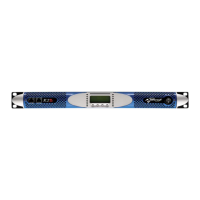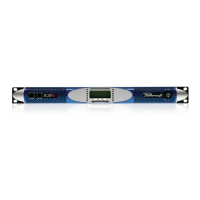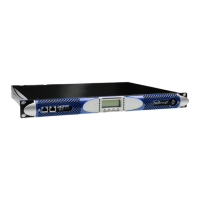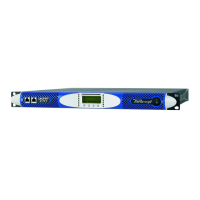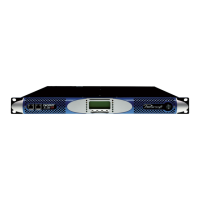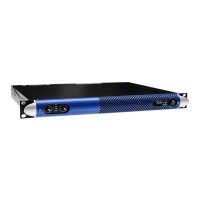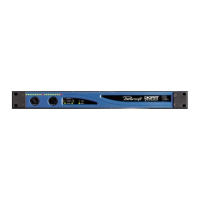AES3-A stream
Control data stream
Port 1
(master)
Port 2
(master)
Port 3
(slave)
Port 4
(slave)
Ethernet switch
FIGURE 44: This diagram illustrates a simplied internal AES3 and
Ethernet data path. The amplier is set to repeat the AES3-A stream
coming from master port 1 to master port 2. For consistency, master
ports are placed in the rear of the amp, while slave ports are at
the front. Notice that AES3 streams are monodirectional, while data
stream is bidirectional.
AES3-A stream
Control data stream
Port 1
(master)
Port 2
(master)
Port 3
(slave)
Port 4
(slave)
Ethernet switch
FIGURE 45: This diagram shows the amplier set to repeat the
AES3-A from master port 2 to master port 1.
AES3-A stream
AES3-B stream
Control data stream
Port 1
(master)
Port 2
(master)
Port 3
(slave)
Port 4
(slave)
Ethernet switch
FIGURE 46: This diagram shows both AES3 datapaths in repeater
mode. In this example, the AES3-A streams enters port 2 and is
repeated out of port 1. At the same time, the AES3-B stream is
incoming in port 1 and is repeated outwardly via port 2. All possible
permutations are not displayed.
KEASOP forward mode
When the amplier is set in forward mode, the AES3 signal
coming into the amplier from the rear panel XLR connector is
forwarded to both of the master RJ45 ports. The rear panel toggle
button next to the CH2 XLR connector must be in the “AES/
EBU” position. There are three ways the AES can be forwarded:
▶
Forward to AES3-A:
the amplier’s rear panel AES input via the XLR connector will be
routed to the AES stream A on both master ports 1 and 2. If there
is an AES3-B stream incoming from either master ports (1 or 2),
this will be repeated on the other master port. For example, the
gure below shows the “Forward to AES3-A” function where the
AES3 stream coming from the rear XLR connector is forwarded
to the AES3-A stream and no AES3-B stream is present.
